Types of Assessment
by Carol Hawkins

1. Diagnostic-An assessment given before a learning activity with the purpose of measuring students' prior knowledge and misconceptions.
1.1. Advantages: Can give information about prior knowledge or misconceptions so that a teacher can plan lessons that better meat student needs.
1.2. Disadvantages: Takes a significant amount of time to write, grade, and assess the information given through this type of testing.
1.3. Assessment for learning: The purpose of diagnostic testing is to give the teacher information that they need to create meaningful and more useful lessons.
1.4. Examples: pretest, quizzes.
2. Formative-A group of formal and informal assessments for the purpose of checking for understanding to help teachers adjust their teaching to attain higher student achievement.
2.1. Advantages: Gives the teacher data needed to adjust instruction to help increase student learning.
2.2. Disadvantages: Depending on the type of formative assessment it may take up time that could be used for instruction.
2.3. Assessment for learning: Formative assessment are done to give the teacher information so that they adjust how they are teaching a concept to help improve student learning.
2.4. Examples: Thumbs up/thumbs down, classroom discussions, leading questions, teacher observations
3. Summative-Assessments given at the conclusion of an instructional period for the purpose of evaluating student learning.
3.1. Advantages: Provides data on how well students know material.
3.2. Disadvantages: May not give accurate information about students who don't test well. Usually only test superficial knowledge.
3.3. Assessment of learning: These types of assessment are done when instruction is complete for the purpose of measuring what has been learned.
3.4. Examples: Chapter tests, final exams
4. Performance Based-The performance of a task that shows achievement of certain standards for the purpose of checking student understanding and helping students gain a greater understanding of concepts.
4.1. Advantages: Engages students in active learning and is a more student centered approach.
4.2. Disadvantages: Is more time consuming and is often more expensive.
4.3. Assessment of learning: Teacher can use the performance of certain tasks to see how well students understand the material.
4.4. Examples: oral report, demonstrations of lab techniques
5. High-Stakes-Any test used to make important decisions about students, educators, schools, or districts, most commonly for the purpose of accountability.
5.1. Advantages: Holds schools accountable for teaching higher standards.
5.2. Disadvantages: Teachers tend to teach to the test.
5.3. Assessment of learning: There is not other purpose of a high-stakes test other than to measure knowledge.
5.4. Examples: AP exam, SAT, ACT, AZMERRIT
6. Portfolio- A complilation of academic work for the purpose of showing student achievement and learning. It is also a way for students to reflect on their own progress.
6.1. Advantages: Students are able to show their progress and improvement.
6.2. Disadvantages: Can be more difficult and time consuming for the teacher to evaluate than more traditional assessments.
6.3. Assessment of Learning: While the work that is in a portfolio may be done for learning the actual compiling of this work is done for the purpose of assessing what a student has learned.
6.4. Examples: Lab note book, compilation of projects.
7. Authentic-Students show understanding of material by solving real-world problems for the purpose of gaining a deeper understanding of content.
7.1. Advantages: Students gain deeper understanding and are more prepared for "real-world" problems.
7.2. Disadvantages: Can be very time consuming.
7.3. Assessment of Learning: While the authentic assessments encourage deeper understanding and learning there ultimate purpose is to measure how well a student understands a concept.
7.4. Examples: Labs, projects
8. Self-Assessment- Students are able to assess their own work with for the purpose of helping students take responsibility of their own education and meet the standards required of them.
8.1. Advantages: Students take responsibility for their own education and receive immediate feedback.
8.2. Disadvantages: Students with no self-motivation may not learn much from this form of assessment.
8.3. Assessment for learning: Students assess their learning so they know what information they do and don't understand and can work to increase understanding.
8.4. Examples: Self-check worksheets and fix mistakes, Grade work together as a class
9. Peer Assessment-Having students assess each others work with the purpose of helping the student being assessed the and the student doing the assessment to learn and revise their understanding of concepts.
9.1. Advantages: Students receive immediate feedback. Both the student being reviewed and the one doing the review increase learning.
9.2. Disadvantages: Students may give biased feedback or may not give the correct feedback.
9.3. Assessment for learning: The students assess each other so that there is immediate feedback to increase learning.
9.4. Examples: Students grading each others worksheets, student discussions, student checked labs.


